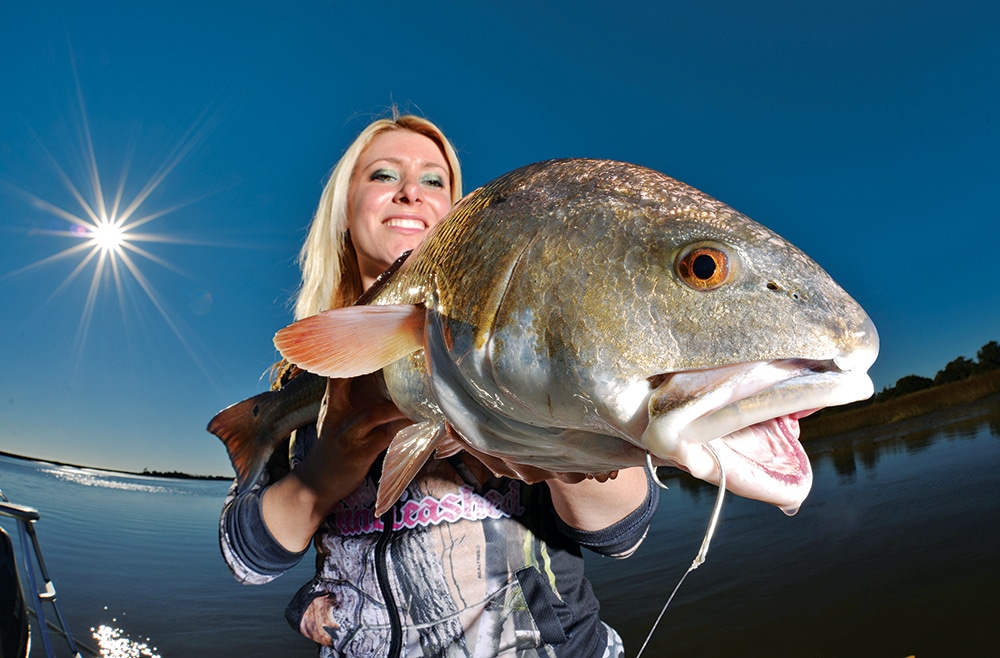
If you’ve ever had a hook come flying back toward the boat when an angler reacts to a fish’s strike, you know how strong the urge is to set the hook. Though it’s not widely known, there’s a reason many captains insist that anglers reel tight — instead of yanking hard — when live-bait fishing with circle or J hooks. Let me explain why.
In most scenarios, reeling tight to a fish generates a stronger hook-set than a full-muscled yank. A steady retrieve often leads the hook to the corner of the mouth — more secure and more harmless than gut hooking. Still, don’t allow the fish too much time with the bait to prevent swallowing. Even if a fish misses the presentation initially, second-chance opportunities favor the patient angler. Plus, today’s hooks are incredibly sharp right out of the package.
“Trokar hooks get their sharpness from surgically sharpened technology, a technique [derived] from the medical field, where the sharpest instruments in the world are developed,” says Matt Gray, category manager for Eagle Claw.
If the point of the hook is dulled from bouncing off structure, a few strokes with a fine-grained hook hone will sharpen it up.
I spoke with two experts to determine the best techniques for solid hook-sets when fishing natural baits or lures.
Slow Down Offshore Hook-Sets
Not setting circle hooks has been ingrained in the minds of many anglers for decades. But maybe the same can be said for offshore fishing with J hooks using natural baits.
“With J hooks, I just reel tight and lift up,” says Capt. Sonny Schindler, owner of Shore Thing Fishing Charters in Bay St. Louis, Mississippi. “The weight of the fish should bury the hook. If the fish is swimming against the tension of the line, those hooks keep digging.”
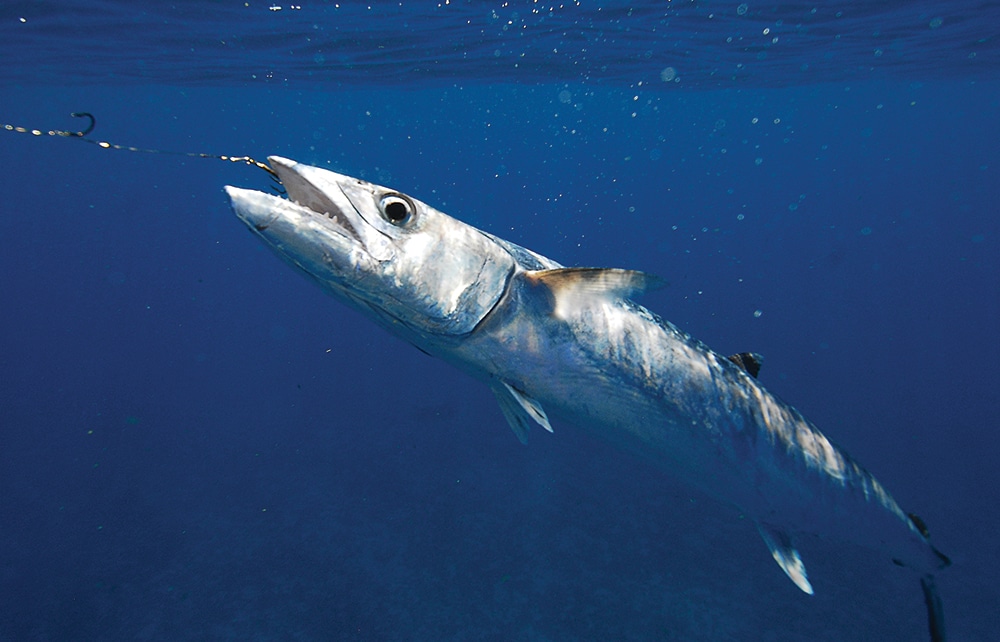
Whether using circle or live-bait hooks, it’s good practice to take up the slack in the line once the fish hits the baitfish. Fly-lined baits have a tendency to develop bows in the line, so it pays to keep the presentation as tight as possible.
“When trolling ballyhoo rigs offshore, I never set the hook after the strike,” says Capt. Daniel Raeburn, owner of Fin-S Charters in Morehead City, North Carolina. “If I need to guarantee that the hook is set, I will put my fingers on the spool to give it a little more pressure.”
Securing the hook is less about the initial hookup and more about keeping the line tight throughout the fight. Schindler takes that to a new level when fishing with circle hooks. “In almost every instance of circle-hook fishing, I try to leave the rod in the rod holder,” he says. “The clicker stays on, and the drag is set loosely. When the fish hits, I move the drag lever to strike and start reeling.”
Raeburn is particularly cognizant not to pull back on the rod when fishing soft-mouth, sharp-teeth fish such as king mackerel.
“I typically use a single nose-hook and a No. 4 treble hook for the trailer,” he says. “Too many kings are lost due to pulled hooks — they hit so fast.”
Inshore Hook-Set Techniques
Do tactics change once you head inshore? Not as much as you might expect.
“Most of my clients have a hard time getting a good hookup with circle hooks for species like flounder, seatrout and red drum,” says Raeburn, “so I’ll use octopus hooks and braided line for better hook placement.”
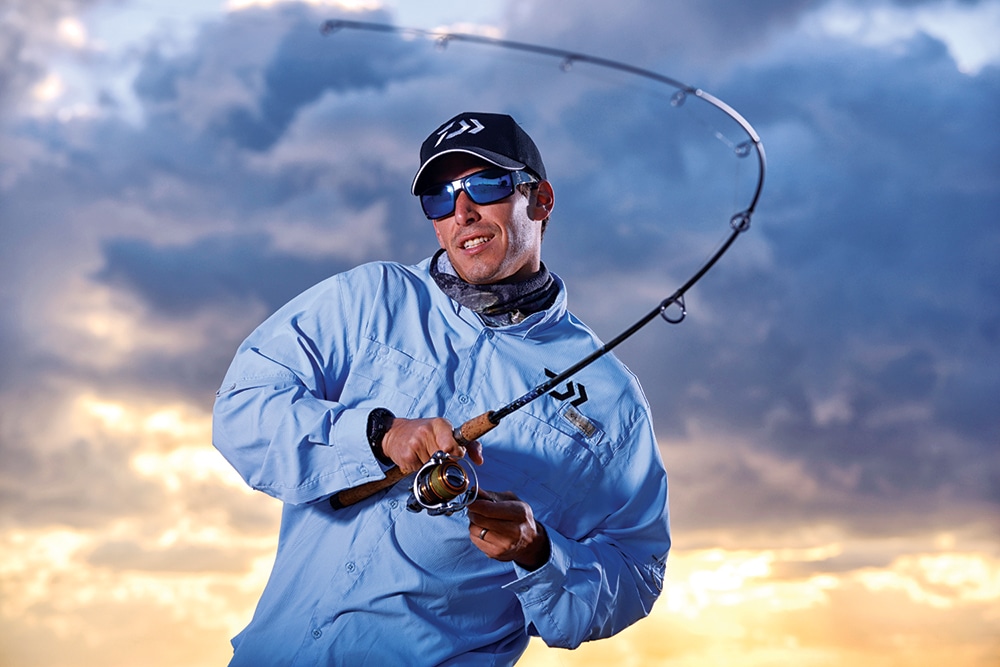
Raeburn reminds his anglers that they need only to reel the line tight and pull the rod back in a steady motion to set the hook. Pin baits to the hook at body points such as the anal fin or behind the brain so the point protrudes through the offering.
“Set up your rod and line to match your fishing needs,” says Raeburn. “If you know you like to set the hook hard, use monofilament on a soft rod with a lot of give. If you can restrain yourself more, go with a stiffer rod and braided line.”
Schindler likes braid for its sensitivity, but because of its lack of stretch, he believes hook-sets can sometimes be too powerful.
“I firmly believe you can rip the hook out of fish with braided line, especially if your drag is set on the tighter side,” he says.
To feel the bite, keep the rod tip straight up and line tight. When a fish hits, lower the tip to the water and reel. Slack is the enemy for any fisherman, especially if his hooks are de-barbed.
“When I feel the weight of the fish, I try to turn the rod and my body hard to the side,” says Schindler. “I do give the fish a light hook-set, but the set coincides with constant reeling. This way, if the fish swims toward you, you will not have to compensate for slack.”
Topwater Hook-Sets
Ever consider why topwater bites and actual hookups differ so dramatically? Game fish completely “whiff” on the plugs at times, but usually some type of angler error derails a hookup. Time after time, I’ve seen casters set the hook way too early at the strike.
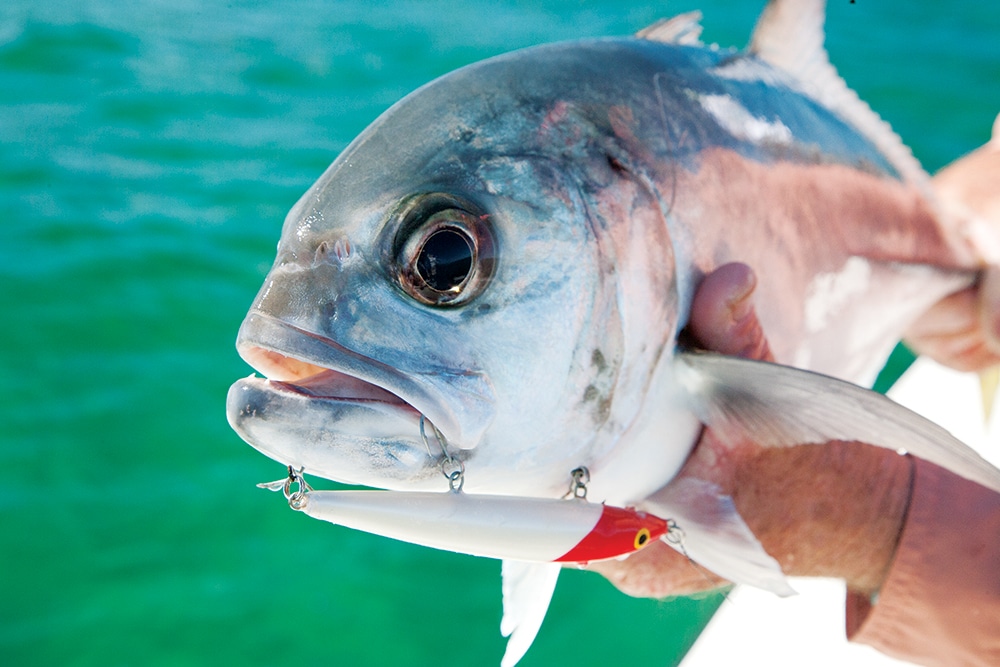
“When fishing with topwaters, I normally wait for the fish to pull the line tight, or I reel tight before setting the hook,” says Raeburn.
It’s amazing that baits averaging six to nine hook points have trouble finding purchase inside a fish’s mouth. But the answer is not in the number of hooks on the lure. For the most solid hook-set, wait until the weight of the fish is obvious at the end of the line.
“Truth be told, most of the hooks we’ve had to remove from our guides and customers have come from flying topwater baits that took flight during ‘heroic’ hook-sets,” says Schindler.
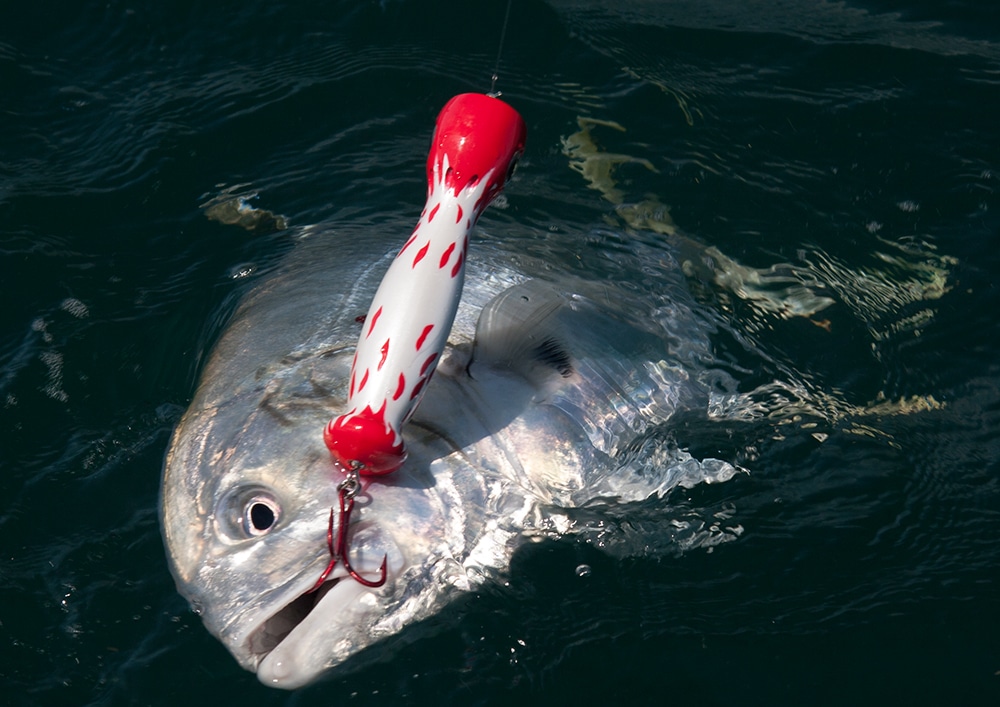
When to Pull Back While Setting a Hook
So when can you “lay the wood” to a fish? Stretchy monofilament requires a harder hook-set than braided line, in particular when casting lures. Also consider what speed the lure presentation requires.
“The faster the retrieval rate of a lure, typically the less hook-set is needed,” says Raeburn. “When using a slow retrieval, you need more time and strength in the hook-set.” Fish don’t usually strike quickly at slow-moving baits, he says.
When bottom-bouncing bucktails or finessing a jig, fish often hit on the drop. This is one of those times when you have to reel quickly and set the hook hard. In fact, any time a presentation requires some instance of slack line, chances are a solid hook-set is necessary to make up for the slack.
“If I am fishing a popping cork and the cork goes under,” says Schindler, “the fish has the bait, and I’ll set the hook hard — really let ’em have it. Seems as though you get only a few seconds before the weight or drag from the cork causes the fish to spit the hook.”









